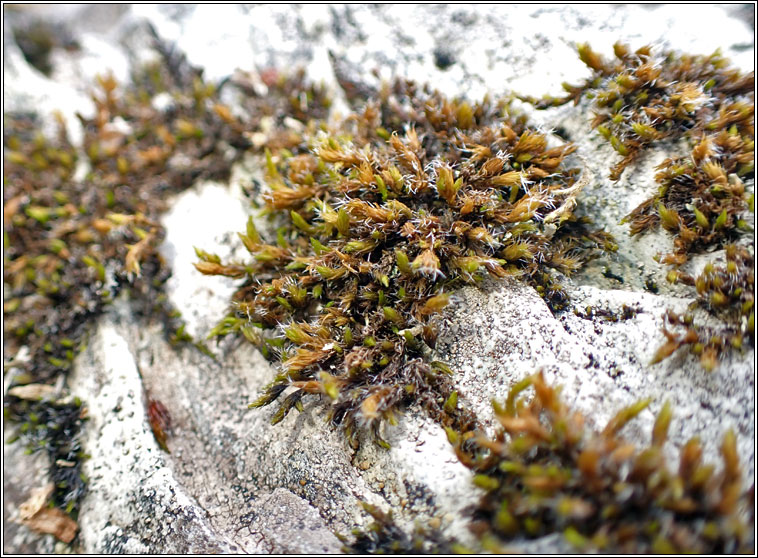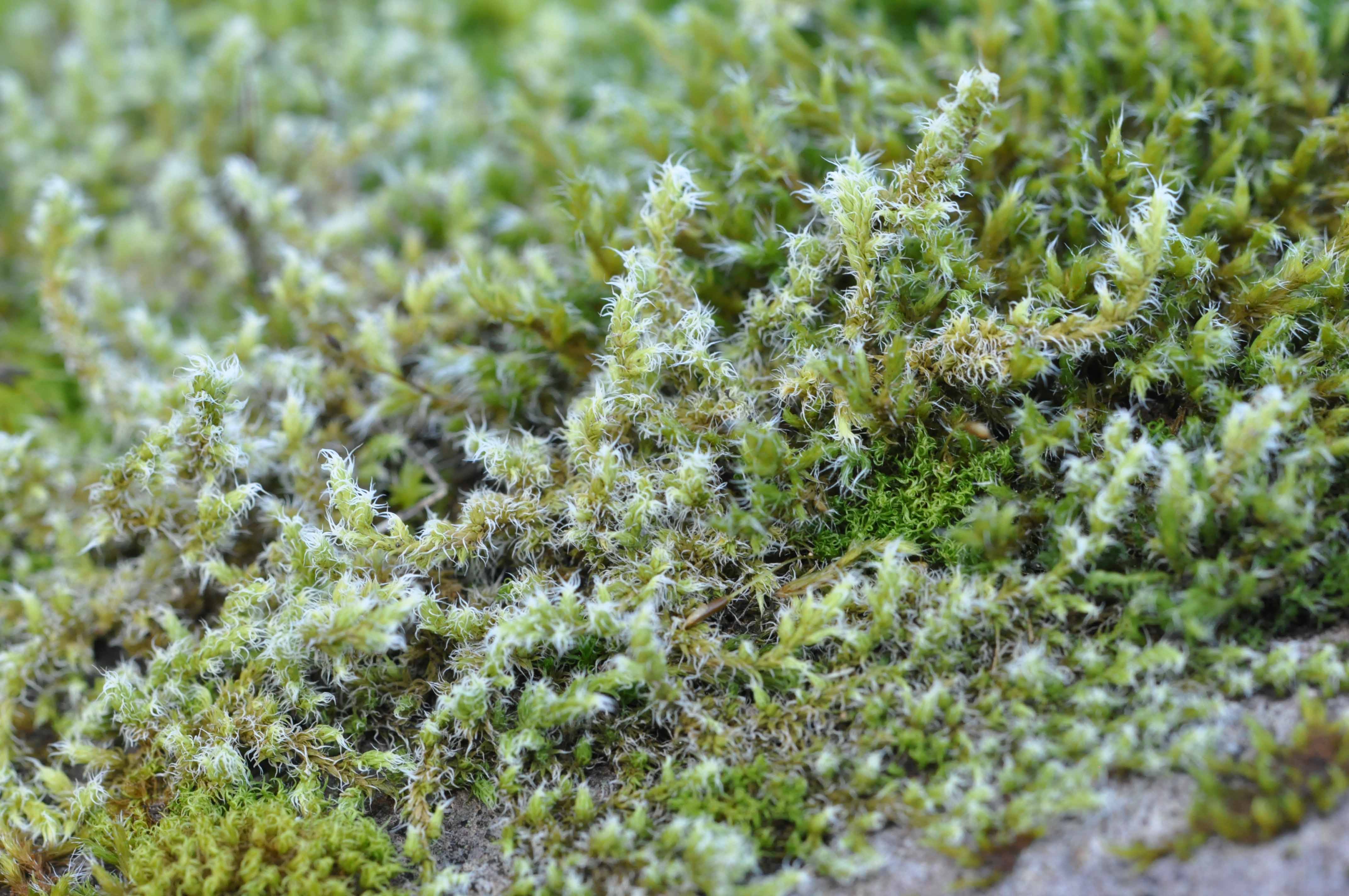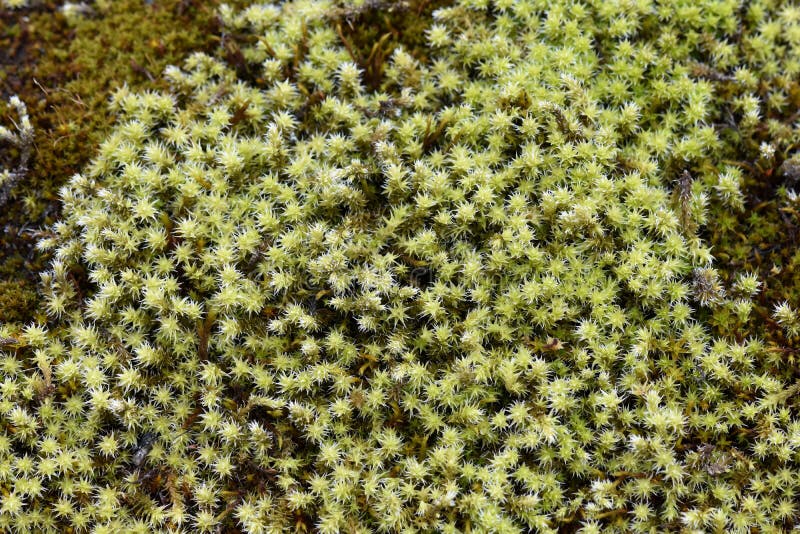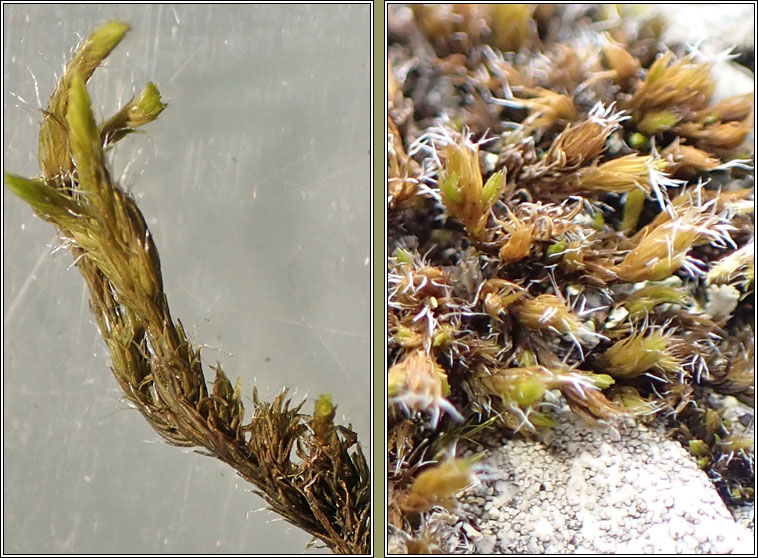
image from: https://www.thebryophytanursery.com/listing/1181249739/terrarium-moss-racomitrium-heterostichum
Exploring the Fascinating World of Racomitrium heterostichoides Cardot Moss
Introduction
Mosses are some of the most ancient and resilient plants on Earth, having evolved over 400 million years ago. One particularly interesting species is Racomitrium heterostichoides Cardot, a moss in the Grimmiaceae family. In this blog post, we’ll take a closer look at this fascinating bryophyte, from its unique morphology to its global distribution and ecological roles. Get ready to dive into the captivating realm of Racomitrium moss!
Background on Mosses
Before we focus on R. heterostichoides specifically, let’s review some background on mosses in general. Mosses are non-vascular plants in the division Bryophyta. They lack true roots, stems, and leaves, instead having structures that serve similar functions. Mosses reproduce via spores rather than seeds and require water for sexual reproduction. There are over 12,000 species of moss found all around the world, from the Arctic to the tropics.
Morphology and Identification
Racomitrium heterostichoides Cardot is a acrocarpous moss, meaning it bears sporophytes at the tips of the main stems. Its scientific name comes from the Greek words rhacos meaning “shredded” and mitra meaning “cap”, referring to the torn calyptra (covering) on the capsule.
The stems of R. heterostichoides are prostrate to ascending, often forming loose tufts or mats. The leaves are lanceolate to ovate-lanceolate, often secund (turned to one side), and have a single costa (midrib) that extends to the leaf tip. Leaf margins are recurved and denticulate

image from: https://cisfbr.org.uk/Bryo/Cornish_Bryophytes_Racomitrium_heterostichum.html
near the apex.
One of the most distinguishing features of R. heterostichoides is the presence of hyaline hair-points on the leaf tips, giving the plants a hoary appearance. Capsules are cylindric and borne on long setae. The peristome (toothed structure around the capsule mouth) is single with 16 teeth that are divided nearly to the base.
Global Distribution and Habitat
Racomitrium heterostichoides has a wide distribution, being found in many parts of the world including North America, Europe, Asia, Africa, and Australasia. It commonly grows on acidic substrates such as rocks, boulders, cliffs, and soil in exposed habitats from lowlands to alpine regions. This moss is particularly well-adapted to harsh environments characterized by high winds, intense sunlight, and periods of desiccation

image from: https://www.britishbryologicalsociety.org.uk/learning/species-finder/racomitrium-heterostichum/
.
In North America, R. heterostichoides occurs across much of Canada and the western United States, primarily at high elevations in the Rocky Mountains, Cascades, and Sierra Nevada. Some of the oldest and largest known specimens have been found on the slopes of the Beartooth Mountains in Montana and Wyoming.
Ecological Roles and Adaptations
Like other mosses, Racomitrium heterostichoides plays important ecological roles despite its small size. As a

image from: https://www.irishwildflowers.ie/pages-moss/m-42.html
primary producer, it contributes to the food web and helps cycle nutrients. Moss mats also retain moisture, stabilize soil, and provide shelter for invertebrates

image from: https://www.inaturalist.org/guide_taxa/298321
.
R. heterostichoides has several adaptations that allow it to thrive in the challenging habitats it occupies. The hair-points on the leaves help reflect excess light and slow water loss. The moss can also enter a metabolically inactive state to survive desiccation, resuming growth once moisture returns. Like other epilithic mosses, R. heterostichoides slowly weathers rock surfaces, contributing to soil formation over long time scales.
Case Study: Alpine Moss Heaths

image from: https://northwestwildlifeonline.com/nw-moss-from-big-to-really-small/
One interesting example of a habitat where R. heterostichoides commonly occurs is in alpine moss heaths. These are high-elevation plant communities dominated by mosses and lichens, with sparse cover of dwarf shrubs and grasses. They typically form on windswept ridges and slopes above treeline.
In the Beartooth Mountains of Montana and Wyoming, R. heterostichoides is one of the dominant moss species in alpine heath communities, along with other

image from: https://www.dreamstime.com/hoary-rock-moss-racomitrium-woolly-fringemoss-racomitrium-moss-growing-stone-image111182453
Racomitrium species and Andreaea mosses. These moss heaths play a vital role in regulating snowmelt, reducing erosion, and providing habitat for unique assemblages of plants and animals adapted to the harsh alpine environment. Climate change poses a major threat to these fragile ecosystems.
| Characteristic | Description |
|---|---|
| Growth form | Acrocarpous |
| Leaf shape | Lanceolate to ovate-lanceolate, often secund |
| Leaf tip | Hyaline hair-point |
Leaf margin
 image from: https://www.irishwildflowers.ie/pages-moss/m-42.html |
Recurved, denticulate near apex |
| Costa | Single, extending to leaf tip |
| Capsule shape | Cylindric |
| Peristome | Single with 16 teeth divided nearly to base |
Conclusion
Racomitrium heterostichoides Cardot

image from: https://www.researchgate.net/figure/El-genero-Racomitrium-en-Latinoamerica-A-R-didymum-30302-Pucon-Chile-B-R_fig13_311271223
is a remarkable moss species with a fascinating ecology. From its unique morphological adaptations to its roles in harsh alpine habitats, this small but mighty plant has much to teach us about resilience and survival in the natural world. The next time you’re hiking in the mountains, take a closer look – you just might spot a patch of

image from: https://idfg.idaho.gov/species/taxa/33862
hoary Racomitrium making its living on a windswept ridge. What other secrets of the moss world remain to be uncovered?